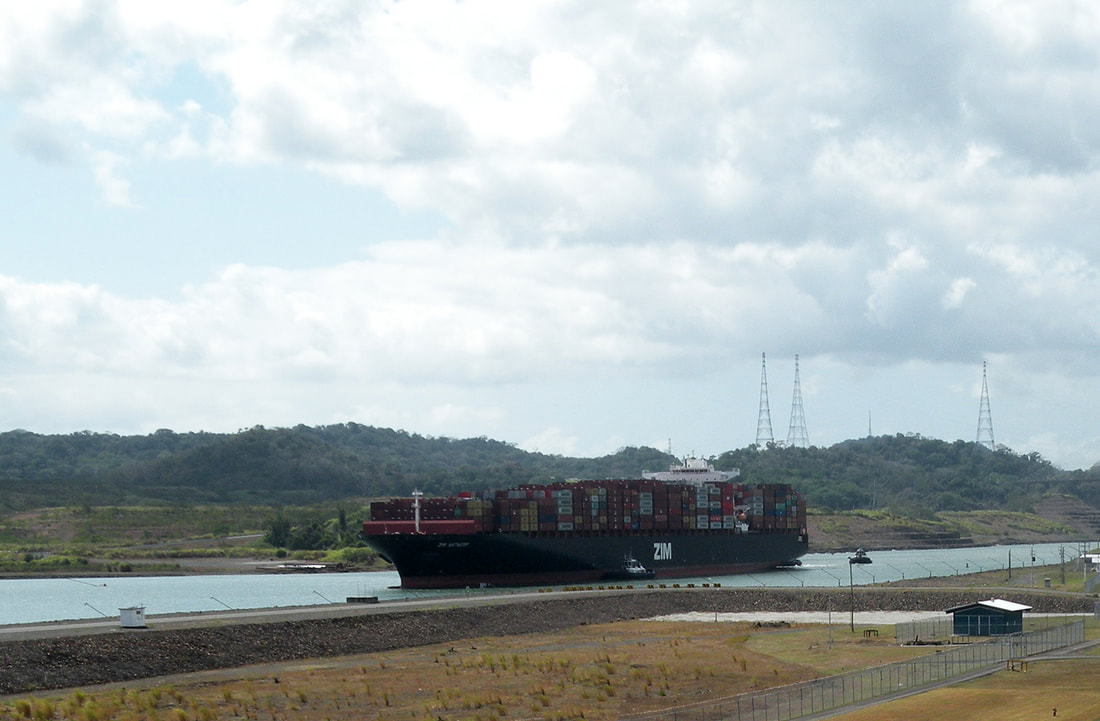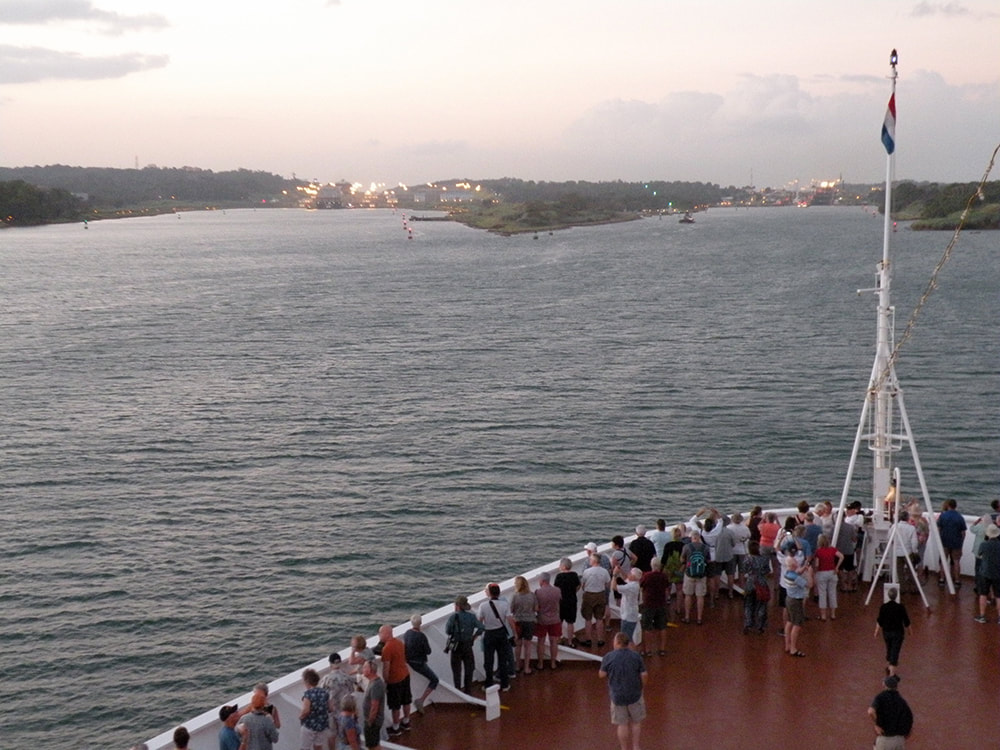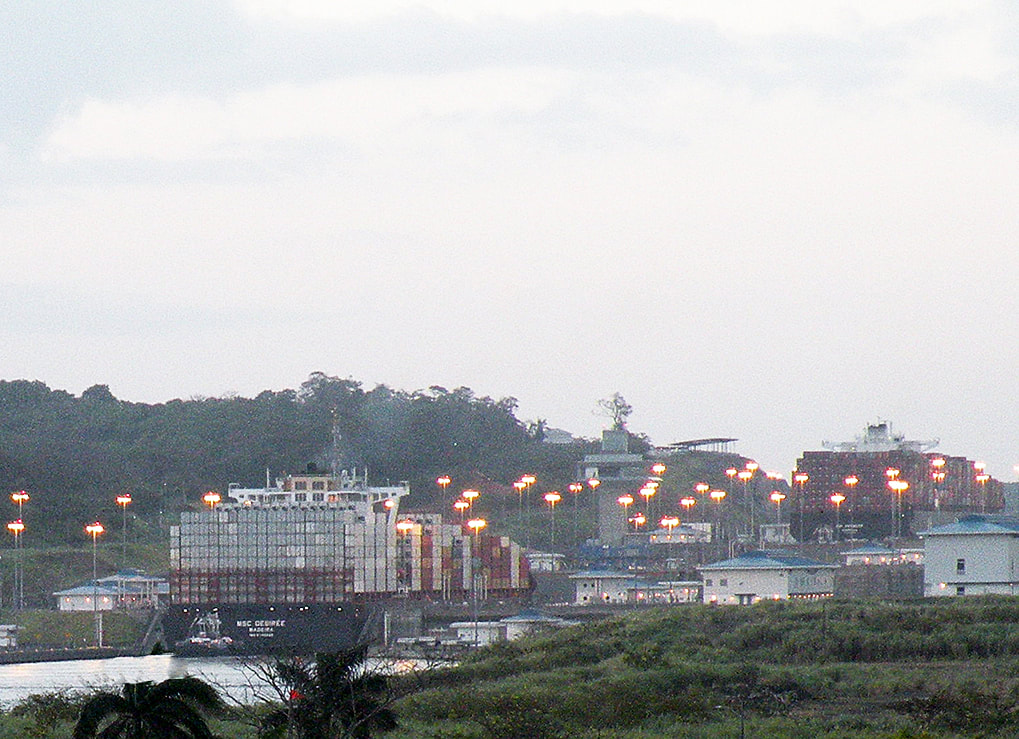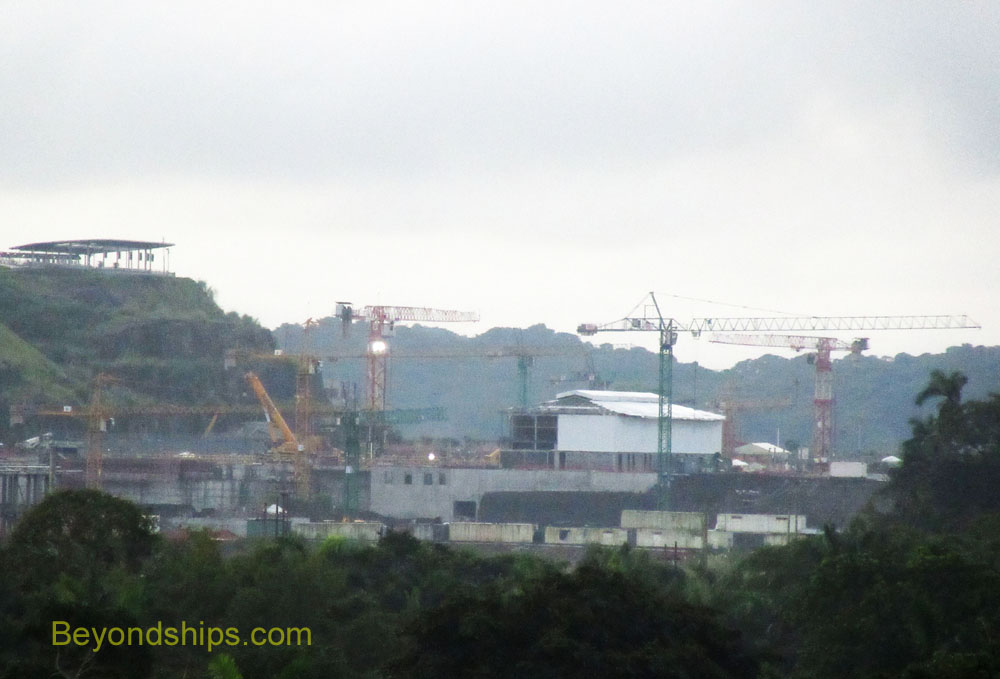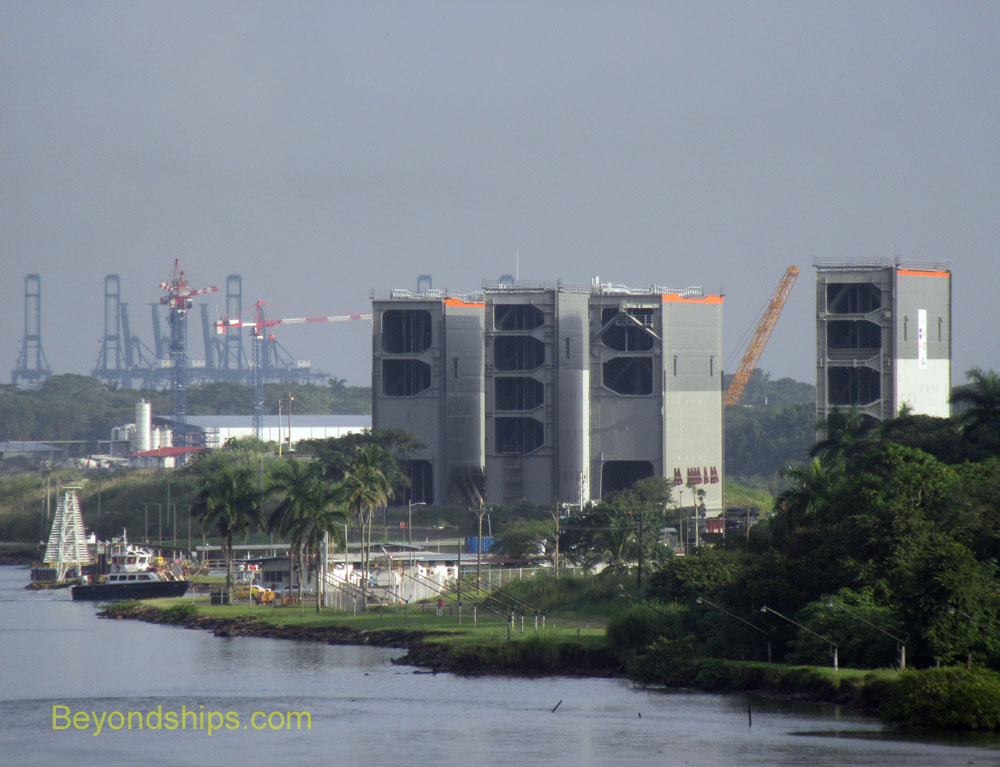The New CanalIn 2016, what is often referred to as the "New Canal" opened for business. This name is something of a misnomer because what was actually done was an expansion of the Canal so that it is now able to accommodate larger ships.
The original Canal has two lanes, each with its own set of locks. The expansion project involved creating a third lane with its own set of locks. While the original lanes have three locks (Gatun, Pedro Miguel, and Miraflores), the new lane has two locks. One located east of the Gatun Locks while the other is southwest of the Miraflores Locks. The new locks are larger than the original locks. They are able to accommodate ships three times the size of ships that fit in the original canal i.e., Panamax ships. Such larger ships are referred to as "Neopanamax" size ships. However, even with the expansion some cruise ships are still too big to transit the canal. Because the new chambers are wider, tug boats are used to maneuver the ships within the chambers instead of mules. Like the original locks, the new locks use water from Gatun Lake and like the original locks the water is moved by gravity rather than by pumps. However, unlike the original locks, the new locks reuse water. It is shifted in and out of the lock chambers from basins located beside the locks. This is done so as to ensure that Gatun Lake maintains enough water to operate the Canal and meet Panama's other needs. Rather than swinging gates as in the original locks, the new locks have rolling gates that come out from the side of the chambers. Each of the new locks has three chambers. The new lane uses part of the existing Canal. Ships get to the new locks on the Atlantic side via a new channel that exits the original channel before the Gatun Locks. This channel was begun in 1939 by the United States but was abandoned because of World War II. Once through the new Atlantic-side locks, ships traverse Gatun Lake. The maximum operational level of the Lake has been raised as part of the expansion project. Ships then enter the Culebra Cut, which has been deepened. A new channel connects the Culebra Cut to the Pacific-side locks. It goes along next to Miraflores Lake but because the water level of the new channel is higher than that of the Lake, a dam divides the old channel from the new. Another new channel has been built from the new Pacific-side locks to the existing entrance to the Canal from the Pacific Ocean. Both the Atlantic and Pacific entrances have been dredged to handle deeper draft ships. It should be noted that the new lane was never intended to replace the original canal. Both the two lanes of the original canal and the new lane are in operation. |
Above: The Canal divides near the Atlantic-side entrance with the new lane to the left and the original two lanes of the right. (photo courtesy of D. Hume).
Above: Container ships transiting the new Atlantic-side locks. (photo courtesy of D. Hume).
Below: The same locks under construction. Above: The Atlantic-side lock gates awaiting installation.
|
|
|
|
Cruise destination travel guide - Panama Canal - Panama Canal How It Works - page two
